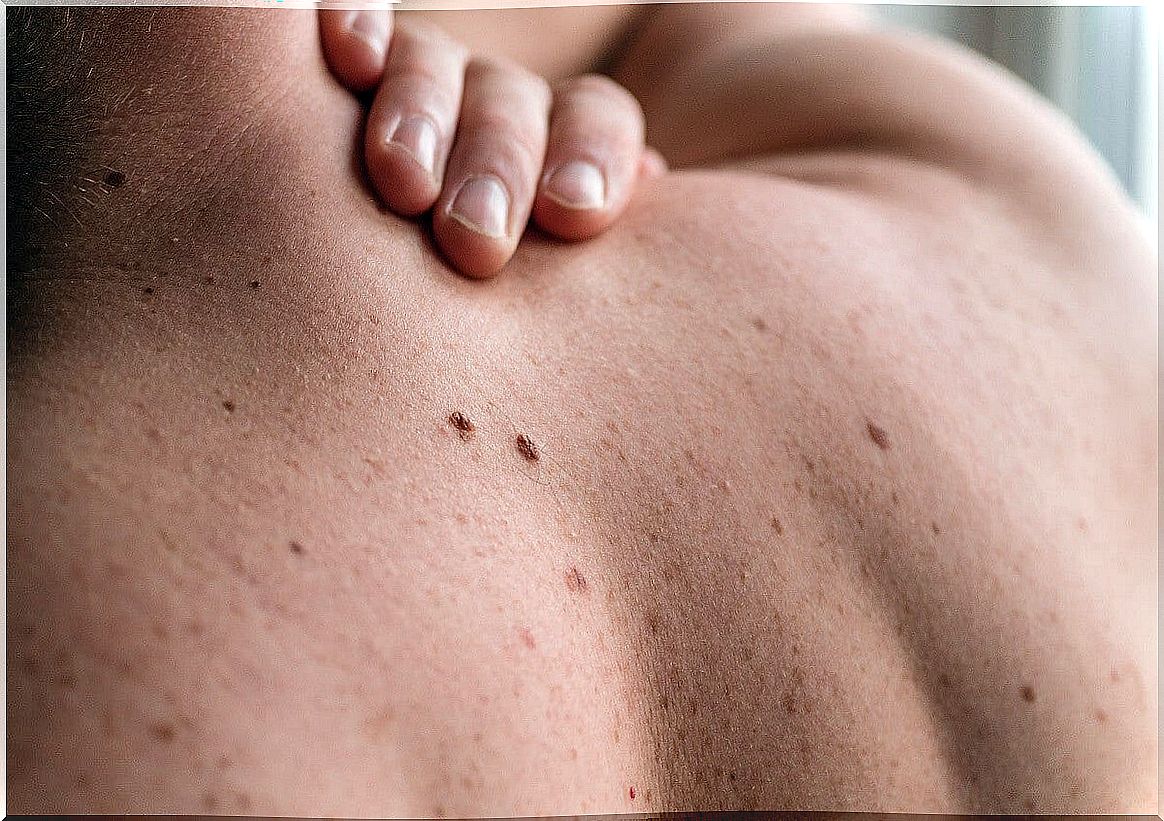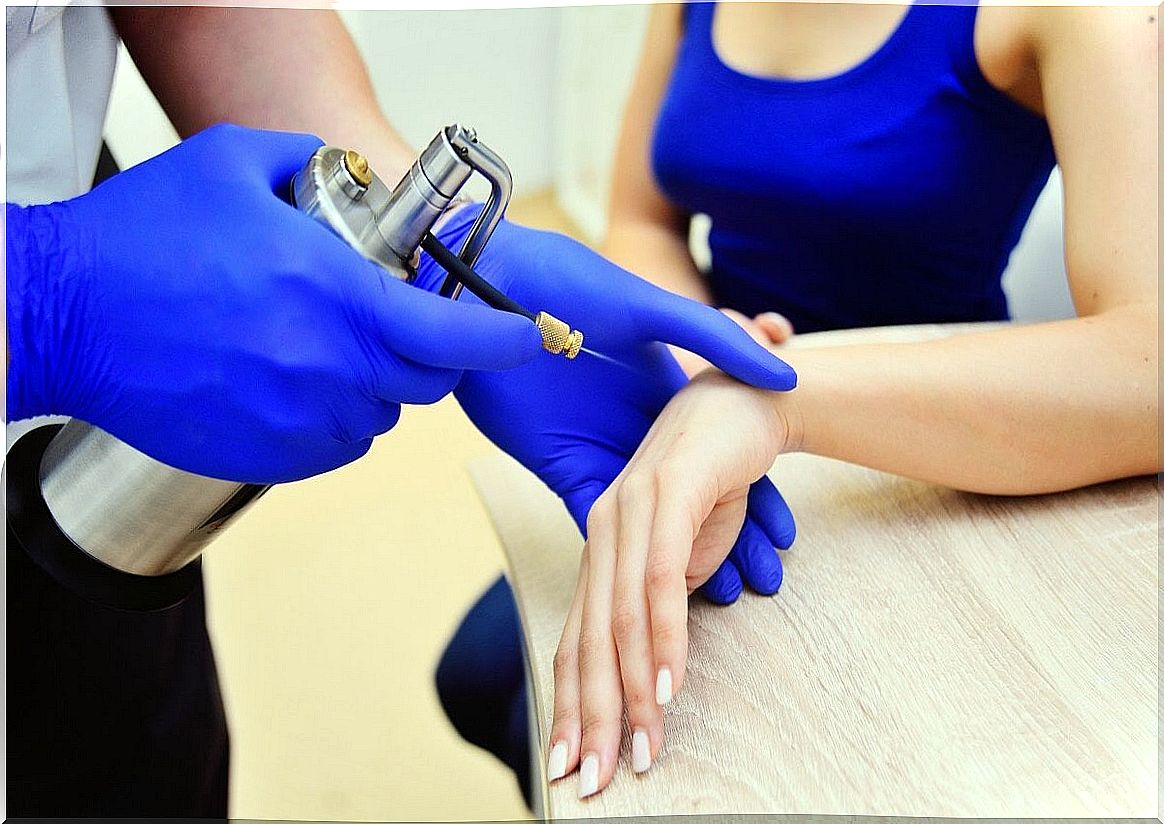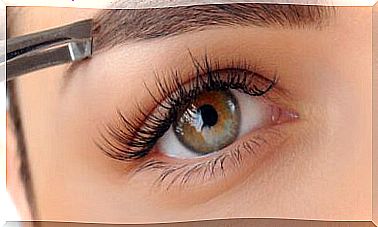Lentigo: What Is It And What Is Its Treatment?
Lentigo is a skin coloration that tends to appear over the years and with solar aging, due to prolonged exposure to ultraviolet (UV) rays. There are also child cases, but they happen to a lesser extent.
These spots are dark and limited in size, usually not larger than 2 centimeters. They are benign, although some grow quickly and are scary at that speed. Others, on the other hand, take years to reach their maximum size. In one way or another they do not contain malignancy.
Types of lentigo
There is no single form of lentigo. They are differentiated by the form they take and the underlying causes that generate them. Also, in some cases, their response or not to certain treatments.
Lentigo simplex
The most common way is the simple one. Its body distribution is varied, since it can be present in the upper or lower limbs, as well as in the chest. They are usually detected at birth and there is a possibility that they will disappear from one moment to the next.

Solar lentigo
This is the way of aging. The skin is exposed to ultraviolet rays for many years and this radiation generates cellular changes that will manifest as spots. Its incidence increases as it is measured in older populations, reaching high levels above 65 and 80 years of age.
The effect of solar radiation is the stimulation of the multiplication of melanocytes. These are the cells that produce and contain the dark-colored pigment melanin. Hence the brown tint of this variety.
Inkblot Lentigo
This is a classic way for people with very white and pale complexions. After being exposed to the sun at a specific and acute moment, with a lot of radiation that penetrates the epidermis without protection, at the same time it results in a small color change, like a point.
PUVA Lentigo
In psoriasis and other related or autoimmune skin diseases, medications and UV therapies may be prescribed. In this particular case, UVAs are used and the combined treatment with drugs is called PUVA.
The adverse effect of PUVA therapy is lentigo, since the radiation used can simulate the effect of sunburn and the transformation of melanocytes.
Radiation lentigo
In the same sense as the previous one, it appears as an adverse effect of a treatment. In this case, it is a derivation of radiotherapy that is applied to cancer patients. It can happen due to lack of adequate protection in certain areas of the skin or because it was unfeasible based on the sessions that had to be practiced. They are not always avoidable.
Why do lentigos occur and what are their symptoms?
The causes of lentigo, as we have been saying, respond to a large extent to radiation. In any case, there are records of genetic inheritance that causes the same spotting in the same body area between parents, grandparents and children. It is also possible to inherit risk factors for the development of lesions, such as skin type.
Genetic forms appear as more complex syndromes that include other signs in certain people. Peutz-Jeghers syndrome is an example, in which patients suffer non-cancerous tumor growths in the digestive tract accompanying the dermal spots.
When it comes to radiation, both the sun’s rays and PUVA and radiation oncology are culprits. Melanocytes change due to the radiant stimulus and grow uncontrollably, multiplying the amount of melanin and concentrating it in certain areas.
The spots are dark due to melanic pigment and appear on different parts of the body. While the simple type tends to be located in the limbs, in the solar forms there is concentration on the face.
How to differentiate a benign lentigo from a malignant one?
Lentigo maligna is an in situ form of skin melanoma that originates from solar radiation. There are some scientific discussions about the correct name, but this is accepted in a generic way, while some authors propose to speak in this way only when there is no penetration of the dermis by the tumor.
Although there are clinical criteria for a dermatologist to determine benignity with observation, when in doubt a skin biopsy is necessary. The lesion is excised, if possible, and microscopic analysis is performed.
There is no other way to be certain when the possibility of confusion arises. In any case, health professionals are trained to use dermoscopy (amplified observation of the skin) with the minimum degree of error that allows ruling out the malignant.
Possible treatments
The lentigo approach is conservative almost always because its benign nature does not require removal. If it is specified, it may be due to a suspicion of malignancy or for cosmetic reasons that the patient requests. E mong the options have cryosurgery, laser and topical creams.
Cryosurgery
This small surgery is performed in outpatient offices without the need for anesthesia or further care. In the same consultation, the dermatologist applies an aerosol made up of liquid nitrogen on the lesion. This substance will freeze the cells of the lentigo and form a crust.
As the days go by, the scab will come off, dragging the lesion. Ultimately, what happens is that the lentigo burns with cold.

To be
The use of lasers to treat lentigo is based on pulses of light, so you can also opt for the form of pulsed light, used, for example, in aesthetic therapies for permanent hair removal. Light energy is concentrated on the lesion and it disappears after several sessions.
Topical creams
There are many creams on the market that are sold for the purpose of removing blemishes from the skin. These are the ones that, by publicity, are promoted for lentigo in women over 40 years of age.
However, the most effective active compound so far, according to scientific studies, is oxiresveratrol. It is an inhibitor of an enzyme called tyrosinase , involved in the metabolism of melanin. The drug is also prescribed for other skin pigment conditions.
Lentigo is benign
We know that lentigo is benign. The only care that should be taken is confusion with the in situ form of melanoma. For this, a timely consultation and a skin biopsy are sufficient in order to detect the possible malignant presence.
In case you want to remove the stain for an aesthetic reason, there are some options that are mostly safe. It is enough for a professional to provide advice to choose the method that suits the skin type and age of each one.








